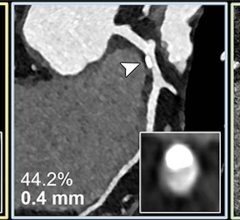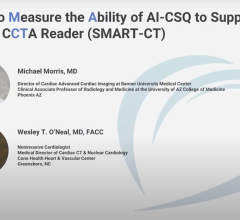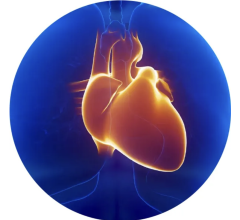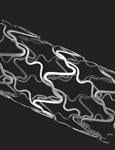
Cordis received CE mark clearance in Europe earlier this year to market its CYPHER SELECT DES specifically to treat diabetic patients. Currently there are no stents with an FDA clearance specifically to treat diabetics in the United States.
In recent years, the U.S. cardiac device market has focused on dynamics in the drug-eluting stent (DES) segment – including events ranging from the 2006 BASKET-LATE trial that caused a tremendous decline in DES usage to the 2008 launch of three new DES brands in the U.S. Focus in 2010 will shift somewhat, with a relatively steady DES market leaving room for other areas to heat up. Hot topics for 2010 include emerging therapies such as percutaneous heart valve repair and catheter ablation for atrial fibrillation, as well as imaging techniques such as computed tomography angiography (CTA) and nuclear medicine.
Cardiac Imaging
On the cardiac imaging front, CTA will continue to grow in importance as a tool for diagnosing coronary heart disease (CHD). Use of CTA will increase due to its ability to rule out adverse cardiac events in patients deemed to be at a low risk of developing significant blood flow-restricting CHD. In a recent study published in the American Journal of Cardiology, it was found that CTA was able to correctly identify all non-negative cases at a fraction of the cost of a nuclear medicine and invasive angiography procedures. In addition to the speed with which patients can be scanned and the widespread availability of computed tomography (CT) scanners in emergency departments and catheterization labs, these new results will lead to widespread adoption of CTA over the next year.
Despite the growing interest in CTA, other cardiac imaging modalities will gain attention in 2010. Nuclear medicine, which has been buffeted by a shortage of radioisotopes, will continue to be the most popular choice for many cardiologists for myocardial perfusion imaging. The use of nuclear medicine systems in cardiac imaging has, however, been negatively affected by the erratic supply of technetium-based radioisotopes. With the continuing shutdown of the Chalk River reactor in Canada disrupting isotope supply to many North American facilities, nuclear medicine procedures have been limited. In the face of this crisis, cardiologists have been forced to resort to dual-isotope studies, which use thallium for images at rest and technetium for stress imaging to eke out more studies from their current supply of technetium-based isotopes. Few cardiologists are proponents of using thallium, however, because of poorer image quality and longer scan times.
Facilities have also had to resort to using CTA, echocardiography, and traditional angiography to cope with erratic technetium supplies. With the Canadian reactor not expected to be back in production until the first quarter of 2010, the current outage will continue to hinder nuclear medicine cardiac scans. Once the reactor resumes production, market conditions will be alleviated to some extent; however, the planned maintenance of the Petten reactor in 2010 will ensure that the supply chain will continue to remain fragile.
The state of the global infrastructure for producing technetium-based isotopes has been a cause of concern for some time, and in July 2009 a bill was introduced in the U.S. House of Representatives designed to fund efforts to begin domestic production of the technetium-based isotopes in the United States. With an assured supply of technetium-based radioisotopes after the first quarter of 2010, nuclear medicine procedures in cardiac imaging will experience a revival.
Treatments for Atrial Fibrillation
The treatment of atrial fibrillation (AF) is one area that will continue to garner attention among cardiologists and electrophysiologists in 2010. Although this disease is not life-threatening, it is often a precursor to more serious complications, including stroke. Primary treatment options include antiarrhythmic drugs and implantation of cardiac rhythm management devices, however, clinical trials such as AFFIRM, RACE, and STAF have shown that these methods offer limited benefits to AF patients. Catheter ablation is emerging as a viable treatment alternative, and given recently updated clinical guidelines and product developments, it will play an increasing role in the treatment of AF through 2010.
The focus on catheter ablation for AF began in 2006 when the American College of Cardiology, the American Heart Association, and the European Society of Cardiology updated their guidelines for the treatment of AF to include catheter ablation as a secondary treatment option. The guidelines have since recommended catheter ablation for patients who have not responded to at least one treatment cycle of antiarrhythmic drug therapy.
Several leading device manufacturers responded to this opportunity by developing new catheter ablation products aimed specifically at treating AF safely and effectively. The first approved device launched in November 2008, when an FDA advisory panel voted to expand the label for Biosense Webster’s NaviStar ThermoCool radiofrequency ablation catheter to include an indication for AF. Medtronic followed suit by developing its Cardiac Ablation System, a set of AF-specific ablation catheters. Using the resources it gained from its recent acquisitions of CryoCath and Ablation Frontiers, Medtronic has worked to develop three-dimensional, multielectrode ablation catheters specifically designed for the cardiac anatomy associated with AF. The system was available in Europe as of 2009, but was only available under investigational use in the United States.
As the devices move toward FDA approval, 2010 will see the release of additional catheter ablation clinical trial results.
Percutaneous Heart Valve Repair
With mounting clinical evidence supporting minimally invasive valve repair, particularly in high-risk surgical patients, percutaneous heart valve repair will be another area gaining industry interest in 2010. Although percutaneous aortic heart valve devices, such as Edwards Lifesciences’ Sapien, are CE marked in Europe, no such device is available in the United States.
Because conventional heart valve replacement and repair involves very invasive open-chest surgery, there is significant clinical demand for a minimally invasive heart valve treatment option. Invasive procedures are unsuitable for a large number of high-risk patients and pose many potential complications for those who do undergo the procedure. Percutaneous heart valve repair devices promise to alleviate symptoms by delivering new valves or repairing damaged valves using catheter-based technology.
This minimally invasive approach does not involve the potential risks and complications associated with a conventional heart valve procedure. Edwards Lifesciences will continue to strive for FDA approval next year by evaluating the Sapien in the PARTNER clinical trial. Mounting clinical data will also drive further adoption of the devices in Europe.
Stent Technologies
Although no groundbreaking DES technologies are expected in 2010, research will continue on those still in development. Abbott Vascular, for example, will publish updates from its ABSORB clinical trial, which is investigating the company’s totally-bioabsorbable DES. While physicians in Europe begin trying the new drug-coated balloons offered by Invatec in 2010, their U.S. counterparts will continue to await the device’s approval.
With new devices at their disposal and newer technologies several years away, physician focus on the catheterization labs will continue to be patient outcomes. The rising incidence of diabetes in both the United States and many European countries is prompting physicians to focus on diabetic patients. This patient subset is at higher risk for cardiovascular complications such as coronary artery disease, but it represents less than half of all percutaneous coronary interventions performed. Both Cordis’ Cypher SELECT and Boston Scientific’s TAXUS Liberté were approved for use in treating the condition in Europe as of 2009. However, no DES are approved specifically for diabetic patients in the U.S. Manufacturers are expected to focus on obtaining FDA approval in 2010 by sponsoring clinical trials that specifically examine this patient group.
With many new devices in the pipeline and innovative technologies emerging, clinical trials will play an important role in shaping the market over the next year. Although the economy is expected to recover in 2010, U.S. healthcare spending has become a central focus in both the government and public spheres. With methods of curbing healthcare spending at issue, proving patient outcomes will be vital to obtaining reimbursement, which in turn will have a large impact on physician adoption both in 2010 and the next several years.
Editor’s note: Millennium Research Group (www.MRG.net), a Decision Resources Inc. company (www.DecisionResourcesInc.com), is a global authority on medical technology market intelligence and a leading provider of strategic information to the healthcare sector. The company provides specialized industry expertise through syndicated reports, ongoing Marketrack projects, customer loyalty tracking, facility-level procedure forecasting, and customized solutions.

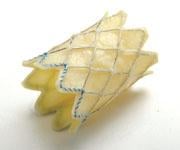

 April 22, 2024
April 22, 2024 

